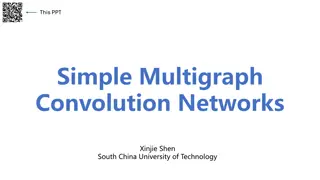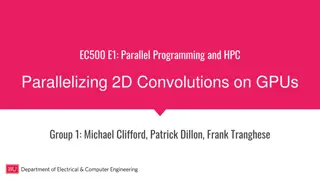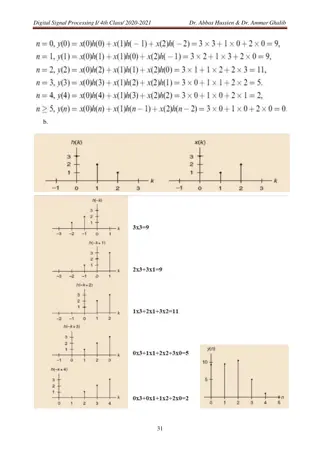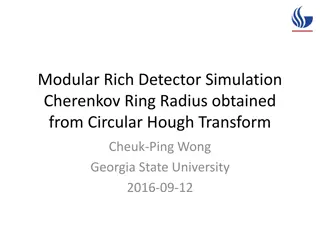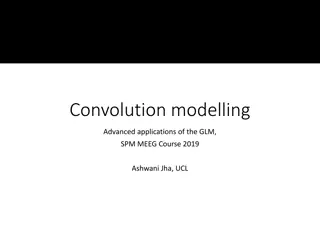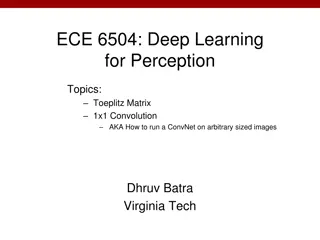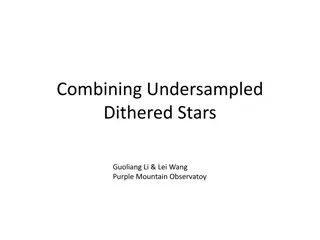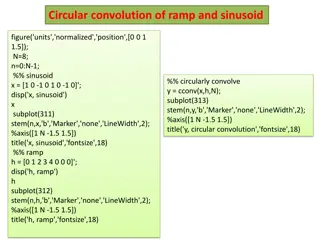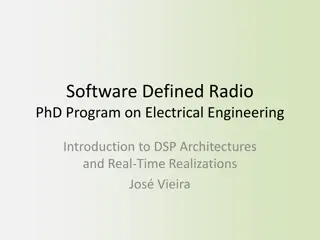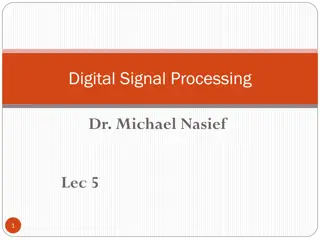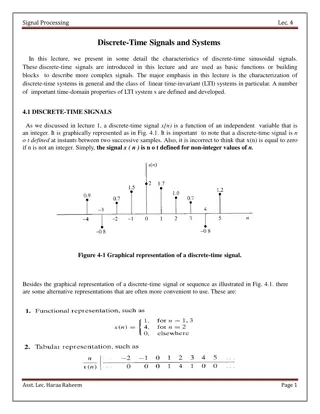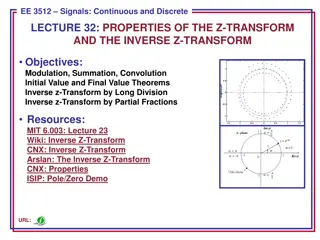Innovations in Pixel Detector Technology for Photon Science
Technologies and advancements in pixel detector development for photon science applications are showcased in this content. Topics discussed include balancing gain and dynamic range in hybrid pixel detectors, performance assessments of integrating pixel detectors, and strategies for photon detection
5 views • 21 slides
Are you ready to take your business to the next level? Check out Maven Group
Elevate your brand with a stunning website that reflects your vision. Our team at Maven Group Global is dedicated in bringing your ideas to life, pixel by pixel. Let's build an online home for your brand together.
0 views • 2 slides
Advancements in Simple Multigraph Convolution Networks by Xinjie Shen
Explore the latest innovations in simple multigraph convolution networks presented by Xinjie Shen from South China University of Technology. The research evaluates existing methods, such as PGCN, MGCN, and MIMO-GCN, and introduces novel techniques for building credible graphs through subgraph-level
10 views • 6 slides
GPU Parallelization for 2D Convolution Optimization
Our project focuses on enhancing the efficiency of 2D convolutions by implementing parallelization with GPUs. We delve into the significance of convolutions, strategies for parallelization, challenges faced, and the outcomes achieved. Through comparing direct convolution to Fast Fourier Transform (F
2 views • 29 slides
Analysis of Epi/Stroma Segmentation with High Pixel Agreement Rates
In this analysis of Epi/Stroma segmentation, multiple images were evaluated, showing overall pixel agreement rates ranging from 0.9211 to 0.9625. True Positive Rates were high, while False Negative Rates varied. The study provides insights into the effectiveness of the segmentation process.
0 views • 10 slides
Pixel Relationships in Image Processing
Exploring the fundamental concepts of pixel relationships in image processing, including 4-neighbors, 8-neighbors, adjacency criteria, and their significance in digital image analysis. The content covers the basics of pixel connectivity and neighbor sets, offering insights into how pixels interact a
10 views • 67 slides
Pixel Array Status and Drawing Rules for High-Resistivity Epi Design
This collection of images and descriptions provides an overview of the pixel array status as of April 26, 2019, along with drawing rules for high-resistivity epi design. The pixel array features various components such as Pixel_S1, Pixel_S3, and the overall array structure. Drawing rules highlight t
5 views • 9 slides
Recent Developments on Super-Resolution: A Comprehensive Overview
Super-resolution technology aims to reconstruct high-resolution images from low-resolution inputs, with applications in video surveillance, medical diagnosis, and remote sensing. Various convolutional neural network (CNN) models have been developed, such as SRCNN, VDSR, ESPCN, and FSRCNN, each with
1 views • 12 slides
Advancements in Pixel Readout R&D for Large Liquid Argon Time-Projection Chambers
Explore the latest developments in pixel readout research and development for large liquid argon time-projection chambers (LArTPCs) presented by Dan Dwyer at the CYGNUS Collaboration Meeting. Learn about signal characteristics, wire signal ambiguity, challenges in true 3D readout, and the innovative
3 views • 13 slides
Digital Signal Processing I 4th Class 2020-2021 by Dr. Abbas Hussien & Dr. Ammar Ghalib
This content delves into Digital Signal Processing concepts taught in the 4th class of 2020-2021 by Dr. Abbas Hussien and Dr. Ammar Ghalib. It covers topics like Table Lookup Method, Linear Convolution, Circular Convolution, practical examples, and Deconvolution techniques such as Polynomial Approac
3 views • 4 slides
Cherenkov Ring Radius Determination from Modular Rich Detector Simulation
Explore the process of obtaining the Cherenkov ring radius using Circular Hough Transform in a modular rich detector simulation. The study, conducted by Cheuk-Ping Wong from Georgia State University, delves into Monte Carlo results, ring finder algorithms, event displays, and radius distributions in
0 views • 20 slides
The Sound Pixel Project: Innovative Audio Design and Implementation
Explore the Sound Pixel Project, a cutting-edge initiative showcasing a transportable and easily constructed frame design concept utilizing lightweight aluminum alloy composite framing. With a focus on independent sound emitters and six sets of stereo speakers, the project also delves into music mix
7 views • 6 slides
Advanced Applications of Convolution Modelling in GLM and SPM MEEG Course 2019
Addressing difficulties in experimental design such as baseline correction, temporally overlapping neural responses, and systematic differences in response timings using a convolution GLM, similar to first-level fMRI analysis. The course focuses on the stop-signal task, EEG correlates of stopping a
2 views • 21 slides
Advanced Convolution Denoising Techniques for Large-Volume Seebeck Calorimeters
Cutting-edge research on convolution denoising methods for Seebeck calorimeters to reduce noise levels caused by temperature fluctuations. The study explores hardware design, mathematical principles, and examples of denoising applications, aiming to enhance measurement accuracy and stability in larg
1 views • 10 slides
Toeplitz Matrix 1x1 Convolution in Deep Learning
Explore the concept of Toeplitz Matrix 1x1 Convolution in deep learning for processing arbitrary-sized images. Discover how this technique enables running ConvNets on images of various dimensions efficiently, making use of matrix multiplication with Toeplitz matrices to achieve convolution. Dive int
3 views • 20 slides
Summary of ITk Pixel Status Reports and Organization Updates
The content provides updates from ITk Pixel Status Reports on project transitions, decision-making processes, organizational structure, and key focus areas. It also outlines responsibilities, strategic planning, and critical items to address within the project timeline. The Planning section outlines
1 views • 24 slides
Progress Update on Phase-2 CMS Pixel R&D Activities in Italy by Marco Meschini
Marco Meschini presents updates on Phase-2 CMS Pixel R&D activities in Italy. Updates include sensor production, wafer batches funded, thinning processes, bump bonding technologies, and irradiation campaigns. The meeting discusses wafer specifications, Epi wafer procurement challenges, and productio
2 views • 28 slides
Advanced Image Processing Techniques for High-Quality Reconstruction
Cutting-edge methods in astrophotography, such as deconvolution and pixel convolution effects, are explored in this detailed presentation. These techniques offer superior image restoration compared to traditional algorithms, emphasizing the importance of addressing pixelation effects to achieve high
5 views • 9 slides
Thermomechanical Analysis of Pixel-Hybrid Module by Leonardo Ribeiro
The thermomechanical analysis of the pixel-hybrid module conducted by Leonardo Ribeiro explores the challenges faced due to cycling between 213 K and room temperature, emphasizing the impact of different thermal expansion coefficients on the structure. The study involves a detailed examination of th
0 views • 19 slides
Pixel Art
Pixel art is a unique form of digital art that harks back to the aesthetics of 8-bit and 16-bit computers and video game consoles. Created using software, pixel art involves editing images on a pixel level, often with a limited color palette. Techniques like dithering and anti-aliasing are common in
3 views • 5 slides
Circular Convolution of Ramp and Sinusoid
Circular convolution of a ramp signal and a sinusoid, followed by convolving a rectangular pulse with itself for exploring convolution techniques. The process involves visualizing signal convolutions, understanding how zero-padding affects plotting clarity, and using convolution for denoising a piec
41 views • 4 slides
Mini and Micro Spectrometer Pixel Wavelength Calibration
In the realm of spectrometer technology, accurate pixel and wavelength calibration is paramount. Dana Hinckley's work on mini and micro spectrometers delves into the intricacies of pixel values detection and calibration through polynomial expansions. Despite potential variances, the calculated value
2 views • 4 slides
Introduction to DSP Architectures and Real-Time Realizations in Electrical Engineering
This content delves into the world of Digital Signal Processing (DSP) architectures, specifically focusing on real-time realizations and their applications in electrical engineering. It covers the evolution of DSPs, main producers in the industry, historical milestones, the role of FPGAs in Software
3 views • 46 slides
Commissioning and SUSY Search with Same Sign Leptons in Pixel Detector Post-IBL Insertion
The ATLAS Pixel Detector, augmented by the Insertable B-Layer (IBL), underwent commissioning to enhance tracking precision and sensitivity to b-jets. Motivations for IBL insertion included preservation of detector performance, robustness against radiation damage, and improved b-tagging capabilities.
3 views • 14 slides
Alpine Pixel Detector Integration Strategies
This content discusses the integration and installation strategies of the Alpine pixel detector, focusing on the outer and inner pixel components. It covers the design criteria, assembly methods, and replacement processes involved in optimizing radiation exposure and maximizing efficiency. The detai
4 views • 7 slides
Digital Signal Processing with Dr. Michael Nasief: Understanding Convolution and Fourier Analysis
In this educational content, Dr. Michael Nasief explores key concepts in digital signal processing, focusing on topics like convolution, Fourier analysis, frequency response, and complex values. Through detailed explanations and visual aids, learners can grasp the fundamentals of finite-length seque
0 views • 19 slides
Advanced Image Compression Techniques
Novel image compression techniques focusing on joint asymmetric convolution blocks and local/global context optimization. Learn about state-of-the-art methods, including Minnen's approach, asymmetric convolution blocks, and context modeling. Discover how these techniques enhance feature extraction,
0 views • 9 slides
Implementing OOP for Icon Representation
In this project, a Python program is developed to implement Object-Oriented Programming (OOP) concepts for representing an icon with pixels at specific locations and colors. The program defines classes for Color, Pixel, and Icon, each serving a distinct purpose in creating and displaying the icon. T
9 views • 14 slides
Introduction to Convolution and Image Processing
Concepts of convolution in image processing, Fourier spectrum, spatial filtering operations, noise cleaning techniques, edge detection, and the convolution theorem. Learn about various applications and properties of convolution, along with practical examples. Dive into the world of signal processing
0 views • 22 slides
Convolution and Correlation in Digital Image Analysis
Explore the key concepts of convolution and correlation in digital image analysis, including mask processing, interpolation techniques, and the advantages of understanding linear-shift-invariant systems. Learn about the relationship of pixels within their neighborhoods and how these operations can b
1 views • 20 slides
Edge Detection and Convolution in Image Processing
Discover the purpose of edge detection in image processing, the role of convolution in identifying edges, and the computational steps involved. Enhance your knowledge of how jumps in brightness are detected and marked in images, and learn about the weighted sum calculations that drive the process.
6 views • 67 slides
Convolution in DT LTI Systems
Explore the concept of convolution in discrete-time Linear Time-Invariant systems, where signals are represented as linear combinations of basic building blocks. Learn about unit pulses, impulse responses, and how LTI systems are characterized by their unit pulse response. Visualize the convolution
2 views • 13 slides
Convolution of Discrete-Time Signals in Pattern Recognition and Signals
Learn about the representation of DT signals, response of DT LTI systems, convolution examples, and properties in the context of pattern recognition and signals processing. Topics include exploiting superposition, time-invariance, unit pulses, LTI systems, impulse response, and visualization of conv
1 views • 14 slides
Innovative Pixel Enablement Solutions for Enhanced Digital Imaging Systems
Explore cutting-edge pixel enablement solutions including Snake Pixel Enabling and RowColumn Pixel Enabling for advanced digital imaging systems. Enhance event detection, digital logic, and macro region routing in your matrix setup.
12 views • 6 slides
Discrete-Time Signals and Systems: Characteristics and Properties Explained
Explore the characteristics of discrete-time sinusoidal signals and the general properties of discrete-time systems, focusing on linear time-invariant systems. Learn about impulse responses, convolution sums, and key properties of convolution operators in signal processing.
2 views • 16 slides
Fourier Transform and Convolution Mechanics
Explore the definitions and proofs of Fourier Transform and Convolution, unraveling the mathematics behind these fundamental concepts through detailed step-by-step explanations.
1 views • 5 slides
Properties of Z-Transform and Inverse Z-Transform Lecture Overview
Explore the properties of the Z-transform and the inverse Z-transform, covering linearity, convolution, initial value theorem, final value theorem, and more. Understand modulation, summation, and convolution in the context of signals and systems. Delve into the intricacies of the Z-transform through
0 views • 11 slides
2D Graphics Introduction and Pixel Manipulation Overview
Explore the fundamentals of two-dimensional graphics, including pixel manipulation and color assignments. Learn about pixel coordinates, image creation, and more in computer graphics. Dive into the basics of frame buffers, scan conversion, and the coordination of points to draw detailed images.
2 views • 19 slides
Computer Vision with Python: Nested Loops, Tuples, and Functions
Explore the world of computer vision using Python with a focus on nested loops, tuples, and fruitful functions. Learn how to access and manipulate image pixels, work with 2D tables, and identify pixel colors. Dive into the details of tuples as read-only lists and discover ways to access pixel RGB va
1 views • 16 slides
Learned Image Compression Optimization
Explore the optimization of learned image compression through joint asymmetric convolution blocks and local/global context enhancement. Dive into the technical details of Minnen's methods, asymmetric convolution blocks, and context models for efficient image compression. Discover how advanced techni
2 views • 9 slides

